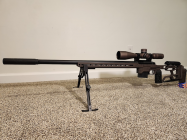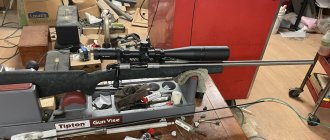I'm a relatively new to handloading. I've only done load development with hunting rifles with okay results. My go-to method was
1. Last up to published max looking for pressure to determine a safe place to test chargeweights
2. Shoot a ladder test to find flat velocity flat spot "nodes"
3. Test different chargeweights within the node to find the amount of powder that yields the lowest SDs and ESs
4. Using the chargeweight with the best velocities and then test seating depth using groups.
5. Hopefully be happy
Now I've been listening to the Hornady podcast and they definitely drive home the idea that velocity notes are a myth...that with a large enough sample size, velocity increases linearly with increases in powder. So now I'm lost. I don't really hear them providing an alternative method, except trying different combinations of bullets/powder/primer. Problem I have I just build a 6 dasher that is purely for fun and hitting steel, and I've bought enough primers (CCI 450), bullets (Berger hybrid 105), and powder (varget), all with matching lot numbers, to last me the life of this barrel. So with that, can yall give me some insights into how you would develop a load? I keep hearing/reading how easy it is to load for the 6 dasher. I tested for max chargeweight today and started hitting pressure at 32.2gr of varget, where my velocity topped out at 2935fps. Was hoping to maybe get a bit more out of my 28" barrel. So since there are no such thing as velocity nodes, then what...just load up to something like 32.0gr and just move straight to bullet seating tests?
1. Last up to published max looking for pressure to determine a safe place to test chargeweights
2. Shoot a ladder test to find flat velocity flat spot "nodes"
3. Test different chargeweights within the node to find the amount of powder that yields the lowest SDs and ESs
4. Using the chargeweight with the best velocities and then test seating depth using groups.
5. Hopefully be happy
Now I've been listening to the Hornady podcast and they definitely drive home the idea that velocity notes are a myth...that with a large enough sample size, velocity increases linearly with increases in powder. So now I'm lost. I don't really hear them providing an alternative method, except trying different combinations of bullets/powder/primer. Problem I have I just build a 6 dasher that is purely for fun and hitting steel, and I've bought enough primers (CCI 450), bullets (Berger hybrid 105), and powder (varget), all with matching lot numbers, to last me the life of this barrel. So with that, can yall give me some insights into how you would develop a load? I keep hearing/reading how easy it is to load for the 6 dasher. I tested for max chargeweight today and started hitting pressure at 32.2gr of varget, where my velocity topped out at 2935fps. Was hoping to maybe get a bit more out of my 28" barrel. So since there are no such thing as velocity nodes, then what...just load up to something like 32.0gr and just move straight to bullet seating tests?












